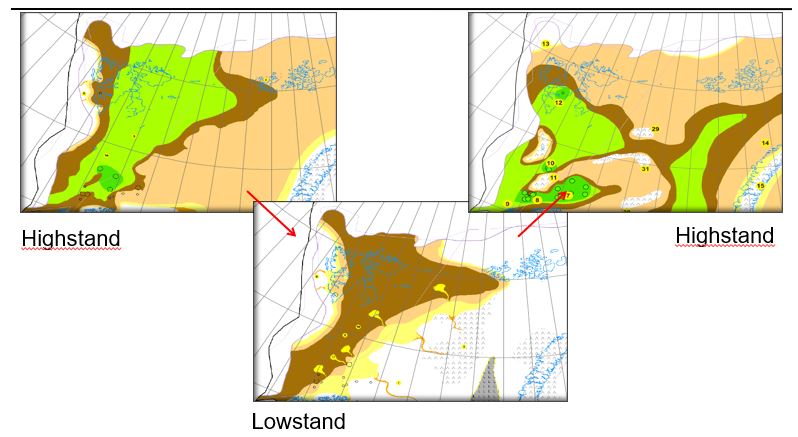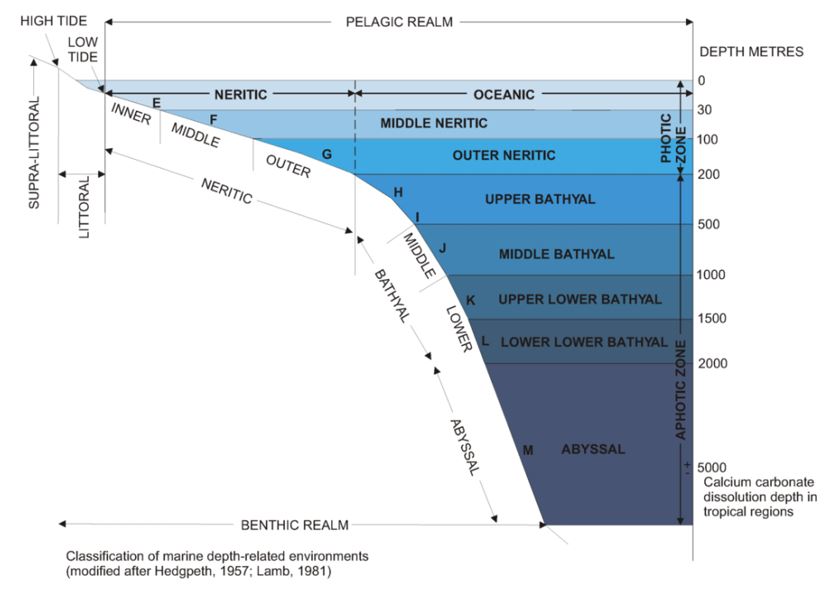Table of Contents
Why Is This Important?
Firstly, depositional regimes – although actually controlled by numerous other factors – are primarily linked to water-depth. Knowledge of the particular depositional regime (e.g. fluvial or turbiditic) of the reservoir may fundamentally affect the way that reservoir is developed and exploited. The internal reservoir architecture can be better defined and internal connectivity pathways can be better predicted.
Secondly, maps showing EOD (sometimes called Gross Depositional Environment - GDE - Maps) are vital in basin-screening to identify prospective new play types.

Successive GDE maps drawn for low- and high-stand phases of a sequence cycle identify potential source, reservoir and seal facies.
Thirdly, the EOD is valuable to estimate accommodation space which is, in turn, input into basin modelling scenarios which impacts on maturity studies.
Fouthly, knowledge of the EOD can greatly assist in solving problems of correlation, particularly between proximal and distal depositional settings.
Traditionally, geologists use the following sources of information to determine paleoenvironments:
- lithology type
- sedimentary structures (*)
- chemical / isotopic signatures
- trace fossils (*)
- macro-fossils (*)
- microfossils, nannofossils and palynofossils
Unfortunately, those items marked (*) are effectively destroyed by the drilling process and therefore cannot be used in the evaluation of most oilfield samples.
Microfossils, which are of course recoverable intact from most oilfield samples, can provide a great deal (probably the most) of value in determining the EOD of a rock sequence and it is the specific use of microfossils that will be discussed here.

The principal subdivisions (by depth) of the hydrosphere.
Depositional environments can also be characterised by microfossils:

Depositional model characterised by microfossil assemblages of the Neogene of NW Borneo (after Simmons et al., 1999).